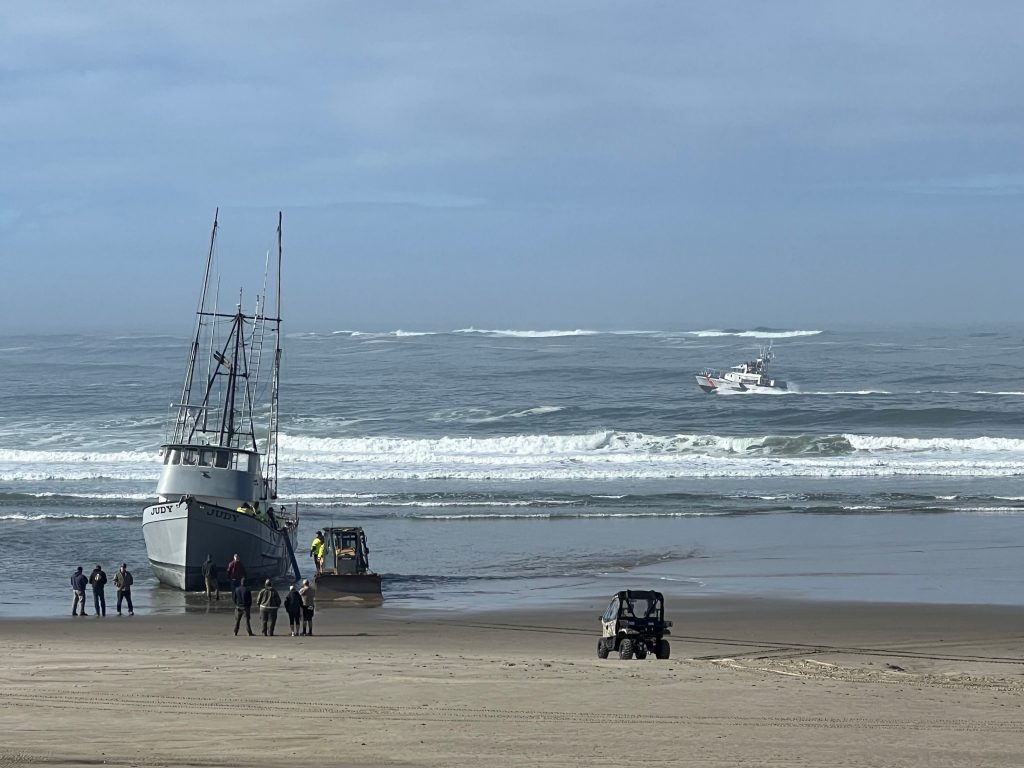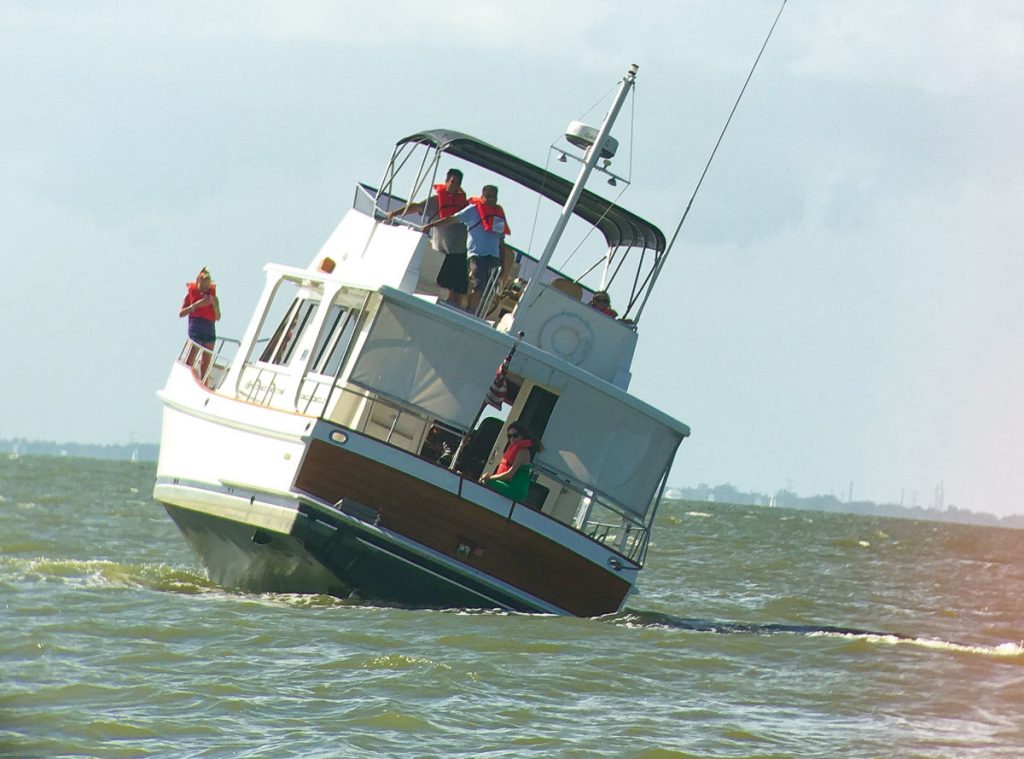What Should You Do After Your Boat Runs Aground and You Determine There Are No Leaks? Steps for Safe Recovery
Running aground is a situation no boater wants to face, but it's crucial to know the right steps to take.

After confirming there are no leaks, the first action should be to stop the engine and lift the outdrive. This prevents further damage to the boat.
Shifting weight away from the point of impact is another key move to ease refloating efforts.
Communication with your crew is important to ensure everyone stays calm and focused.
Begin assessing the surrounding environment, including the tide and weather conditions.

Sometimes, simply waiting for the tide to rise can help free the boat without additional effort.
If needed, use tools like paddles or boat hooks to push off gently from the obstruction.
In some cases, professional assistance might be required. Don't hesitate to call for help if the situation seems too challenging.
Ensuring the safety of everyone on board and preventing any further damage to the boat should always be the top priority.

Key Takeaways
- Stop the engine and lift the outdrive to prevent further damage.
- Shift weight and assess the environment to aid in refloating.
- Communicate and call for help if necessary.
Initial Assessment
When your boat runs aground and you have confirmed there are no leaks, the next steps involve ensuring the safety of all persons and checking for potential risks to the boat and environment.
Assess Immediate Danger
First, determine if anyone on board is injured. Safety is the immediate priority.
Check for signs of injury among the crew and passengers. If there are any serious injuries, prepare to call for help or provide first aid if necessary.
Ensure everyone is wearing a life jacket and staying calm.
Take note of any emergency supplies you might need and keep them accessible.

Check for Environmental Hazards
Look around the boat to identify any environmental hazards like rocks, reefs, sandbars, or coral that may have caused the grounding.
This step is crucial because it can help you understand how to safely maneuver the boat without causing further damage.
Assess the surroundings to determine the best direction to attempt freeing the vessel without exacerbating the situation.
Be mindful of current and tide conditions as these can affect your ability to move the boat and increase risks.

Evaluate Structural Integrity
Perform a thorough examination of the boat to identify any structural damage.
Inspect the hull, focusing on areas where the boat made contact with the ground.
Look for cracks, holes, or other forms of damage that might have compromised the boat's structural integrity.
Check below deck for any signs that may indicate the boat is taking on water, even without visible leaks.
Damage Control and Safety Measures
After ensuring there are no leaks, it's crucial to take immediate steps to manage any damage and ensure safety. These measures include properly distributing weight, using a bilge pump if necessary, and having required safety equipment on hand.
Distribute Weight to Avoid Further Damage
To prevent more harm to the boat, redistributing the weight is essential.
Move heavy items and passengers away from the damaged area. This can help lift the affected part of the boat and minimize the pressure on it.
If possible, ask some passengers to go to the opposite side of the point of impact.
This shift can provide better balance and stability, reducing the chances of worsening the damage.
Using boat cushions or other soft objects can also help to protect the hull from additional abrasions or scratches.
It's important to make these changes slowly and carefully to avoid sudden shifts that could cause further destabilization.

Use Bilge Pump if Taking on Water
If there is water entering the boat, a bilge pump is necessary.
The bilge pump helps remove any unwanted water quickly and efficiently.
Have someone operate the pump while you continue to check for leaks and assess the damage.
Ensure the bilge pump is functioning correctly and that the discharge hose is free of obstructions.
If the water inflow is significant, consider using manual pumps or buckets as well.
In severe cases, call for assistance using your radio to request help from nearby boats or the coast guard.

Required Safety Equipment
Always make sure the boat is equipped with the proper safety gear.
Every passenger should wear a life jacket or Personal Flotation Device (PFD).
It's important that these are in good condition and properly fitted for each person.
Carry visual distress signals like flares or signal lights. These are essential for alerting others in emergencies.
A working radio is also a must for communicating with rescue services or nearby boats.
Regularly check that all safety equipment is accessible and in good working order.
Strategies for Refloating and Extraction
Successfully refloating a boat that has run aground involves safely reversing, waiting for optimal conditions, and manually adjusting the vessel's position. Each step requires careful planning and action.
Attempt to Reverse Off Safely
Start by stopping the engine and lifting the outdrive. This helps avoid damage to the propeller and other parts of the boat.
Assess the situation to determine if the tide or current can assist.
If conditions are favorable, gently engage the boat in reverse.
Make sure the operator is mindful of the throttle to prevent abrupt movements.
Keep the crew informed and assign someone to monitor the hull for signs of further damage.
If the boat begins to move, continue slowly until it is free from the grounding.

Wait for Favorable Conditions
If immediate refloating isn't possible, waiting for high tide or favorable currents can be crucial.
Higher water levels can lift the boat, making the task easier.
Plan to take advantage of high tide by preparing the boat and crew.
Keep a close eye on weather patterns and tidal charts. Communicate the plan clearly to everyone onboard.
Manually Adjust Vessel Position
In shallow waters or less severe groundings, manually adjusting the boat's position can be effective.
Begin by shifting weight to the side opposite the grounding point.
This can be done by having the crew move to that side or by moving heavy objects onboard.
Use paddles, poles, or even your hands to push the boat away from the grounding point.
Be careful of sharp objects and always prioritize safety.
If needed, consider getting off the boat to manually lift or shove off from the bottom.
Communicating and Seeking Assistance
In the event your boat runs aground and there are no leaks, effective communication and seeking assistance are crucial steps. You need to ensure both the safety of your crew and the preservation of your vessel.
Signal and Call for Help if Needed
When aground, the first step is to signal for help.
Use a VHF marine radio to contact the U.S. Coast Guard or local marine authorities. Make sure to broadcast on channel 16, the emergency channel.
If the radio is unavailable, use visual signals like distress flares or flags to attract attention.
It's important to clearly indicate your location, the condition of the vessel, and whether the crew is safe.

Coordinate with Rescue Services
After signaling, establish continuous communication with rescue services.
The U.S. Coast Guard may provide guidance and assistance based on the situation.
Be ready to give specific details about your location, which can include GPS coordinates or landmarks.
Follow instructions from the professionals and keep the crew calm and organized.
Having someone ready to relay information ensures a smoother process.

Prepare the Vessel and Crew for Tow
If towing is necessary, prepare your vessel and crew accordingly.
Secure all loose items on the boat to prevent damage during the towing process.
Ensure the crew is aware of the procedures and stays calm.
Attach the tow line to a sturdy part of the hull, like a tow ring or bow eye.
Prepare the bilge pump in case there is a need to manage water during the tow.
Communicate clearly with the towing service to ensure the process is smooth and safe.
Post-Aground Actions
After determining there are no leaks, it's crucial to take steps to ensure the boat is safe to operate and to document the incident for insurance purposes.
Conduct Comprehensive Vessel Check
Thoroughly inspect the boat for any signs of hull damage or structural damage.
Start with the hull; look for cracks, dents, or deformities.
Examine the outboard engine and other mechanical parts for functioning.
Pay attention to the propeller for any bends or breaks.
Check the interior for signs of damage to ensure the vessel remains seaworthy.
Make sure the engine is running smoothly and that there are no new unusual noises or vibrations.
Also, check the steering systems for responsiveness.
Taking these steps will help identify all necessary repairs.
Create a Report for Insurance and Authorities
After inspecting the boat, document the incident.
Write down the exact location, time, and conditions when you ran aground.
Take photographs of any visible damage, including the hull, engine, or any other parts that might need repair.
Gather witness statements if there were any other vessels or people around.
This documentation is key for filing an insurance claim.
Make sure to also report the incident to the appropriate authorities if required, providing them with all the gathered information.
This can ease the process of navigating through legal and insurance procedures.
Review and Reflect for Future Prevention
Assess what might have caused the grounding.
Was it a navigational error, outdated charts, or unfamiliarity with the area?
Understanding the cause can help prevent future incidents.
Evaluate your navigation plan and consider updating your charts and navigation systems.
Plan alternative routes or adjust the way you navigate certain areas.
Training and better understanding of the waterways can significantly reduce the risk of running aground again.
Investing time in reviewing and learning from the incident ensures better preparedness and safety for all future trips.
Frequently Asked Questions
After running aground and finding no leaks, it's important to know what steps to take next to ensure everyone's safety and preserve the boat's condition. Following best practices can prevent further harm and aid in a smooth refloat.
What is the first step you should take after your boat has run aground?
Ensure the safety of everyone on board.
Check for injuries and provide immediate assistance if necessary.
Safety always comes first before addressing the boat's condition.
If your boat runs aground and everyone is safe, what should be your immediate actions?
Check for leaks or damage to the hull.
If no leaks are found, stop the engine and lift the outdrive if applicable.
Refrain from putting the boat in reverse immediately to prevent further damage.
After grounding a boat, but with no leaks, what measures should you take to prevent further damage?
Shift the weight away from the impact point.
Try to dislodge the boat by pushing off from the bottom or rocks, avoiding harsh movements.
Use fenders to protect the boat’s hull from additional scrapes or impacts.
What precautionary steps should you follow when your vessel has run aground in calm waters?
Carefully check the surroundings to understand what the boat is stuck on.
Soft bottoms like mud or sand are less harmful compared to rocks.
Proceed with gentle maneuvers to free the vessel without causing more grounding.
What are the best practices for assessing potential damage after a boat grounding incident?
Inspect the hull, propeller, and rudder for signs of damage.
Look for cracks, dents, or any structural compromises.
Even if the boat appears undamaged, internal issues could still be present.
How do you safely refloat a boat that has run aground without causing additional harm?
Slowly and carefully try to back off using the engine in reverse if it’s safe to do so. If reversing isn’t an option, consider using a kedge anchor to pull the boat off.
Get assistance from other vessels if needed to avoid further grounding.
Charlie is Editor-in-Chief of Sea Magazine







